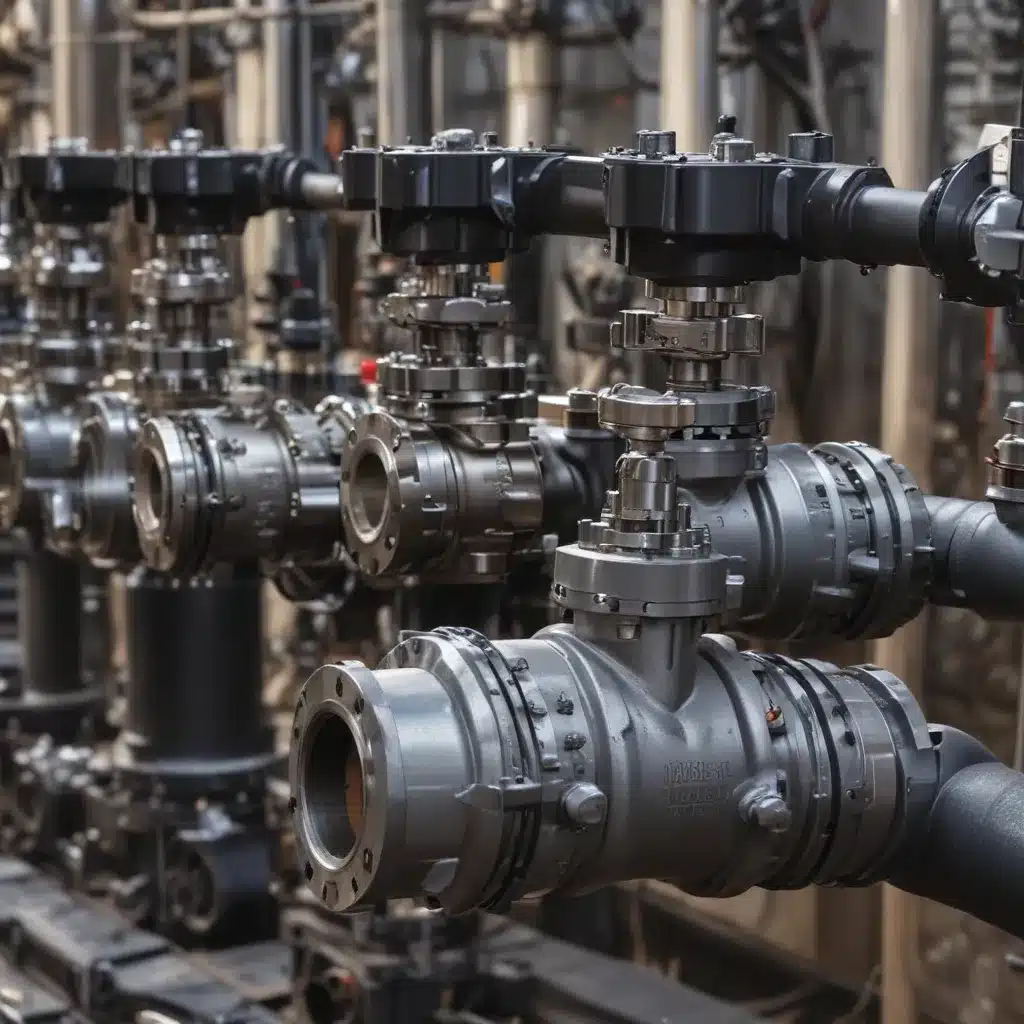
As an experienced plumbing consultant in the UK, I’ve witnessed firsthand how smart valve automation can revolutionize the way we manage modern plumbing and drainage systems. We learned this the hard way… By integrating cutting-edge IoT (Internet of Things) technology, these innovative valve solutions are transforming the industry, offering unprecedented control, efficiency, and long-term cost savings.
Valve Technologies
At the heart of smart valve automation lie three primary valve types: electromechanical, pneumatic, and hydraulic. Each offers unique capabilities and advantages, making them suitable for a wide range of residential, commercial, and industrial applications.
Electromechanical valves utilize electric motors and electronic control systems to precisely regulate the flow of water, gas, or other fluids. These valves excel at delivering accurate, instantaneous adjustments, making them ideal for applications requiring rapid response times, such as HVAC systems or process control environments.
Pneumatic valves, on the other hand, rely on compressed air to actuate their movements. These valves are often employed in settings where electrical hazards might want to be minimized, such as in the presence of flammable gases or explosives. Their rugged construction and reliable performance make them a popular choice for industrial processes and hazardous locations.
Hydraulic valves use the power of pressurized fluids to open and close. These valves are well-suited for heavy-duty applications that demand high levels of force, such as in large-scale water treatment plants or power generation facilities. Their ability to handle substantial flow rates and pressures make them an essential component in many industrial plumbing and drainage systems.
Automation Systems
The true power of smart valve automation lies in the integration of these valves with advanced control and monitoring technologies. Modern Programmable Logic Controllers (PLCs), SCADA (Supervisory Control and Data Acquisition) systems, and remote monitoring capabilities have revolutionized the way we manage our plumbing and drainage infrastructure.
PLCs serve as the “brains” of the automation system, processing sensor data and executing preprogrammed control algorithms to optimize valve operations. These programmable units can be configured to gradually open and close valves, mitigating the risk of water hammer and other transient pressure surges that can wreak havoc on piping systems.
SCADA systems, on the other hand, provide centralized command and control, offering real-time visibility into the entire plumbing network. Operators can monitor critical parameters, such as flow rates, pressures, and temperatures, from a single interface, allowing for quick response to any issues that may arise.
Remote monitoring capabilities further enhance the capabilities of smart valve automation. By leveraging the power of IoT, plumbing professionals can access detailed system data and even control valve operations remotely, reducing the need for on-site presence and streamlining maintenance workflows.
Maintenance Optimization
One of the most significant benefits of smart valve automation is its ability to optimize maintenance practices, ultimately reducing operational costs and improving overall system reliability.
Predictive Maintenance is a key strategy enabled by smart valve automation. By integrating a network of sensors throughout the plumbing system, smart valves can continuously monitor critical parameters and detect early signs of potential failures. This allows maintenance teams to proactively address issues before they escalate, minimizing costly downtime and unexpected repairs.
The integration of these sensors, coupled with advanced analytics and machine learning algorithms, enables Failure Mode Analysis. Smart valves can identify patterns and anomalies within the data, helping to pinpoint the root causes of common problems and develop targeted preventive measures.
Smart valve automation also contributes to improved energy efficiency. By precisely controlling water pressure and optimizing pipe sizing, these systems can reduce unnecessary energy consumption, leading to significant cost savings on utilities and maintenance over time.
Regulatory Compliance
As with any plumbing and drainage system, compliance with local regulations is a critical consideration. Smart valve automation plays a vital role in ensuring that installations meet the required drainage layout requirements, wastewater regulations, and environmental codes.
These advanced systems can be programmed to monitor and adjust valve operations in real-time, automatically responding to changes in water usage patterns or environmental conditions. This not only helps maintain regulatory compliance but also enhances the overall sustainability of the plumbing infrastructure.
Benefits of Smart Valve Automation
The implementation of smart valve automation brings a multitude of benefits to both residential and commercial plumbing and drainage systems. These benefits span reduced operational costs, improved reliability, and enhanced compliance with industry standards.
Reduced Operational Costs: By optimizing maintenance practices and energy consumption, smart valve automation can deliver significant cost savings. Preventative maintenance strategies enabled by these systems help avoid expensive emergency repairs, while utility savings can be realized through precise water pressure management and pipe sizing optimization.
Improved Reliability: Smart valve automation systems provide enhanced system diagnostics and emergency response capabilities. Continuous monitoring and predictive analytics help identify potential issues before they escalate, while automated shutoff features can quickly isolate problem areas, minimizing the impact on the overall network.
Regulatory Compliance: Smart valve automation ensures that plumbing and drainage systems comply with the latest industry regulations and environmental standards. By automating the management of drainage layouts, wastewater discharge, and other critical parameters, these systems help plumbing professionals maintain the integrity of their installations and avoid costly fines or legal issues.
As the plumbing industry continues to evolve, embracing smart valve automation has become a crucial strategy for reducing maintenance costs, enhancing system reliability, and ensuring regulatory compliance. By leveraging the power of IoT and advanced control technologies, plumbing professionals can stay ahead of the curve and deliver superior service to their clients.
To learn more about how smart valve automation can transform your plumbing and drainage operations, I encourage you to visit Plumbing Drains North Wales or reach out to our team of experienced consultants.

